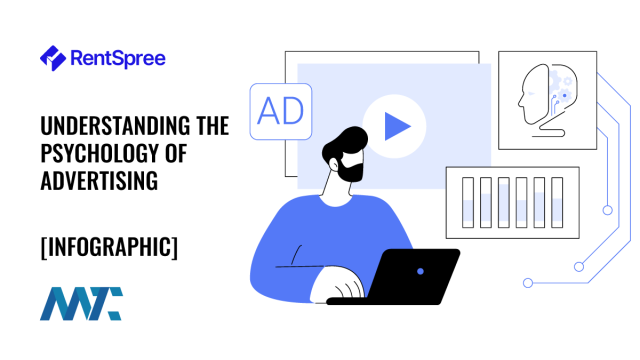Great advertisers understand exactly how their audience thinks and what they respond to. While advertising strategies have evolved over the centuries, from shouting in marketplaces to personalized digital banners, the principles that make these messages persuasive have always been grounded in psychology. Businesses that effectively harness these principles don’t just attract attention—they inspire action.
The Role of Psychology in Advertising
Psychology is not merely a clinical discipline. At its core, it studies how people think, behave, and make decisions. These insights are not limited to therapy or academic research. They extend beyond traditional settings and are incredibly potent in marketing and advertising.
Psychology is critical in advertising for a simple reason: it helps brands communicate in a way that aligns with how consumers already process the world around them. In a landscape where attention is scarce—research suggests we lose focus in just eight seconds—marketers must tap into subconscious behaviors and emotional triggers to make a meaningful impression.
Consumers are bombarded with over 10,000 ads daily, so and attention has become the most valuable currency. Brands that understand their consumers’ minds and craft messages that resonate emotionally and psychologically rise above the noise.
Messaging that Motivates
Advertising psychology isn’t just about aesthetics or tone—it’s a framework for persuasion. Every successful campaign hinges on strategic psychological cues that guide people toward decisions, even when they don’t consciously realize it. Below are key principles marketers use to shape consumer behavior and drive results.
Authority: Expert opinions carry weight. Businesses that highlight their expertise through awards, endorsements, or specialized content build credibility and trust more quickly.
Commitment and Consistency: Once people make a small commitment, they’re more likely to follow through with larger ones. Brands like SEMrush use this principle by offering free tools and educational content, paving the way for paid conversions.
Consensus (Social Proof): People trust the actions of others, especially in unfamiliar situations. Online reviews, customer testimonials, and influencer endorsements are social validators that can significantly increase conversions.
Liking: We’re more influenced by brands we like. Personalization, relatability, and alignment with customer values all help foster likability, increasing the odds of a successful transaction.
Reciprocity Principle: People feel compelled to return favors. When a business offers something free-a gift, sample, or trial—it creates a subtle obligation in the consumer to reciprocate. Benihana’s birthday gift card and Hulu’s free trial exemplify how generosity breeds customer loyalty and spending.
Scarcity: The perception of limited availability makes a product more desirable. Seasonal items like Starbucks’ Pumpkin Spice Latte exemplify how temporary offerings can drive urgency and significant revenue.
Verbatim Effect: People remember the general idea of a message rather than the exact words. Clear, simplified messaging helps audiences absorb and recall the main takeaway of an advertisement.
Visual Design for the Mind
Beyond what ads say, how they look is significant in how they’re received. Visual cues like color, typography, and layout subconsciously communicate meaning, shaping emotional responses before a word is read.
Color Psychology: Each color evokes specific associations. Red suggests urgency or passion. Blue conveys trust. Green implies calm or eco-consciousness. Brands carefully select colors to align with their values and desired customer emotions.
Typography and Fonts: Fonts influence how people interpret your message. Serif fonts like Times New Roman signal tradition and reliability, while sans-serif fonts like Helvetica suggest modernity and cleanliness. Script fonts can convey creativity and playfulness. Choosing the right typeface reinforces the brand’s personality.
Layout and Spacing: Clean, well-organized layouts improve comprehension and recall. Too much clutter can overwhelm users and dilute the core message. A visually balanced design guides the viewer’s eye and reinforces hierarchy in content. The conclusion is a compelling call to action (CTA) that drives conversion rates (CR).
Offers and Pricing
Once a brand has captured attention and built trust, the next challenge is to convert interest into action. This is where pricing psychology comes into play. Subtle cues can shape how a price feels—regardless of its actual value.
Anchoring: Showing a higher original price next to a discounted offer makes the deal look more appealing. This method uses a reference point to increase perceived value.
Charm Pricing: Prices ending in .99 or .95 (e.g., $9.99) create the illusion of a better deal. Consumers tend to focus on the first digit of a price, perceiving $9.99 as meaningfully less than $10, even though the difference is only a penny.
Prestige Pricing: Rounded pricing (e.g., $10.00) suggests quality and confidence. It’s often used in luxury goods to signal that the product is worth its price without apology.
Time-Limited Deals: Urgency created by deadlines encourages quicker decisions. Flash sales or countdown timers leverage the scarcity principle to reduce hesitation.
Advertising That Connects and Converts
At its best, advertising isn’t about manipulation—it’s about resonance. Marketers can design relevant, trustworthy, and engaging campaigns by understanding the psychological mechanisms that shape human behavior.
The most successful advertisers don’t shout the loudest. They speak the clearest, the most persuasively, and most memorably. They appeal to our logic, emotions, and instincts all at once—guiding us, not pushing us, toward action.
Whether you’re crafting a brand identity, fine-tuning a pricing model, or writing ad copy, psychology offers the blueprint. Used ethically and effectively, advertising becomes the key to deeper customer relationships and long-term success.
©2025 DK New Media, LLC, All rights reserved | Disclosure
Originally Published on Martech Zone: Understanding the Psychology of Advertising

